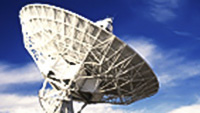Search and order online
Next Generation Space Telescope (NGST)
- Video Tape only
- Title Next Generation Space Telescope (NGST)
- Released: 01/03/2002
- Language English
- Footage Type
- Copyright ESA
- Description
Within the next decade ESA and NASA will launch NGST, the Next Generation Space Telescope. Unlike the Hubble Space Telescope which has been providing images of the Universe for the past 12 years, the NGST will focus on the infrared part of the electromagnetic spectrum. This is due to the fact that there are gaps in the knowledge about the early phases of the universe which are hoped to be filled by NGST observing light at this end of the spectrum.
This programme provides an overview of the NGST complete with graphic animations and explanations on how NGST will help to answer questions about the orgin of the Universe.
The 5-minute A-roll contains split audio with an English guide track and is complemented by a B-roll with international sound onlySCRIPT
Since Galileo built the first telescope back in 1609, observations of the sky have provided an ever more detailed picture of our universe. In the last decade, the Hubble Space Telescope, launched by NASA and ESA in 1990, has looked further into the universe than was ever possible before, unveiling a history of black holes and colliding galaxies. Through Hubble we discovered that the universe expands at a different rate than we previously thought.
But there are still huge gaps in our knowledge of the early phases of the universe. Following the cataclysmic early phaseof the Big Bang, the Universe slowly cooled over time. With cooler temperatures stars and galaxies eventually started to form. After about 500 million years, the earliest stars sent out rays of light, bringing to an end the long period of darkness known as the Dark Ages. Over time, the continuing expansion of the universe shifted the light from the first stars and galaxies beyond the gaze of today's telescopes into the infrared band of the


